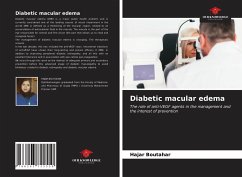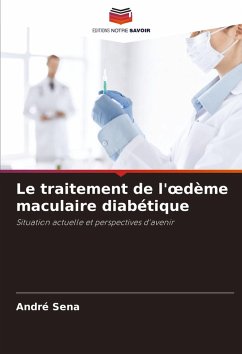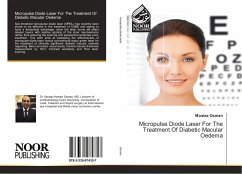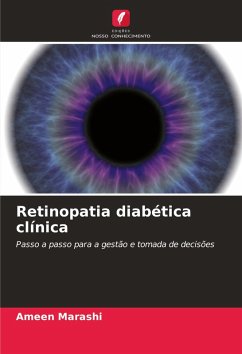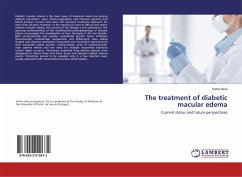
The treatment of diabetic macular edema
Current status and future perspectives
Versandkostenfrei!
Versandfertig in 6-10 Tagen
24,99 €
inkl. MwSt.

PAYBACK Punkte
12 °P sammeln!
Diabetic macular edema is the main cause of moderate vision loss among diabetic population. Laser photo-coagulation and intensive glycemic and blood pressure control have been the standard treatment approach for more than 20 years. However, in the majority of cases of diffuse and severe diabetic macular edema, the control of the disease is not satisfactory. The growing understanding of the multifactorial pathophysiology of macular edema encouraged the investigation of new therapies in the last decade. Both corticosteroids and vascular endothelial growth factor inhibitors (bevacizumab, ranibizu...
Diabetic macular edema is the main cause of moderate vision loss among diabetic population. Laser photo-coagulation and intensive glycemic and blood pressure control have been the standard treatment approach for more than 20 years. However, in the majority of cases of diffuse and severe diabetic macular edema, the control of the disease is not satisfactory. The growing understanding of the multifactorial pathophysiology of macular edema encouraged the investigation of new therapies in the last decade. Both corticosteroids and vascular endothelial growth factor inhibitors (bevacizumab, ranibizumab, pegaptanib, and aflibercept) were widely studied and showed satisfactory anatomical and functional improvements with acceptable safety profiles. Unfortunately, some of corticosteroids' main adverse effects and the need for multiple intravitreal injections remain major concerns. Intravitreal sustained drug delivery systems were developed to reduce these and other drug- and injection-related adverse events. Vitrectomy proves to be valuable only in a few selected cases, usually associated with vitreoretinal interface abnormalities.





